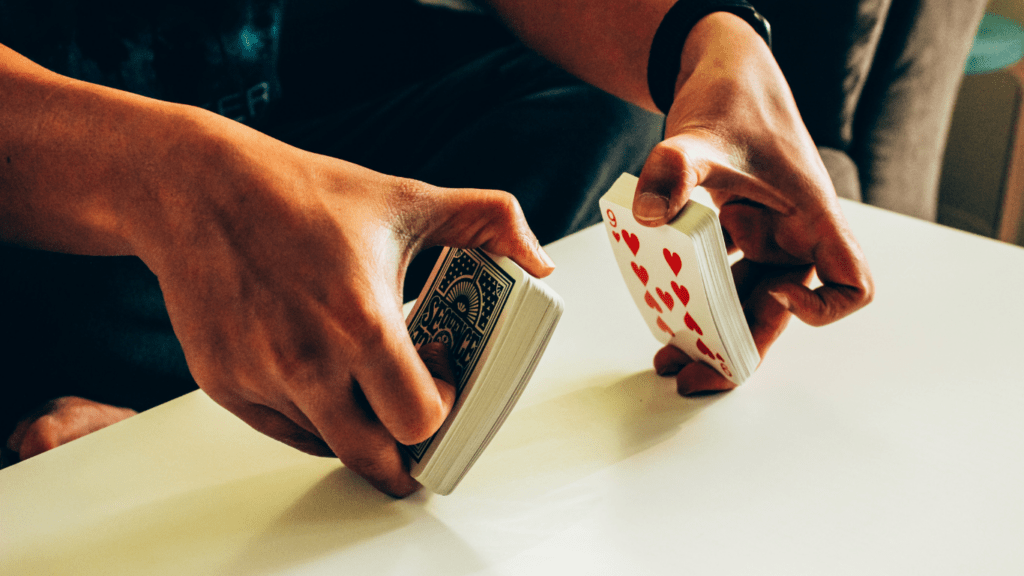Shuffling cards might seem simple, but mastering it can elevate your game to a whole new level. Whether you’re playing poker with friends or dazzling an audience with your skills, a perfect shuffle is essential.
I’ve spent years honing my technique, and I can tell you that the right approach can make all the difference. In this article, I’ll share some of my favorite shuffling techniques that not only improve your game but also impress those around you.
From the classic riffle to the elegant overhand shuffle, each method has its own charm and utility. Let’s dive into the world of card shuffling and unlock the secrets to achieving that flawless shuffle every time.
Understanding the Importance of a Perfect Shuffle
A perfect shuffle enhances gameplay and ensures fairness in card games. It prevents the predictability of card order, keeping the game exciting for players. Mastering shuffling techniques directly influences the game’s outcome, especially in competitive settings.
Skillful shuffling also builds trust among players. When shuffling looks professional, it reassures opponents of the integrity of the game. Observers notice a seamless shuffle, which adds to the overall experience.
Emphasizing proficiency in shuffling techniques creates a strong foundation for a card player. Various methods, including the riffle and overhand shuffle, offer flexibility. Each technique has its strengths, allowing players to choose based on the situation.
In tournaments or casual games, a flawless shuffle boosts confidence. Players who shuffle well focus on strategy rather than worrying about card order. A well-executed shuffle showcases a player’s dedication to the craft, building respect within the card-playing community.
Key Techniques for Shuffling
I focus on three primary techniques that define effective shuffling: the overhand shuffle, the riffle shuffle, and the Hindu shuffle. Each method offers distinct advantages that cater to different gameplay needs.
The Overhand Shuffle
The overhand shuffle’s simplicity makes it an excellent choice for beginners. It involves holding the deck in one hand and using the other hand to pull off small packets of cards. To perform it effectively, I grip the deck firmly, ensure consistent packet sizes, and release them smoothly into the main deck.
This method creates a random order that enhances card distribution while maintaining the deck’s integrity. It’s useful in casual settings where quick shuffling is essential.
The Riffle Shuffle
The riffle shuffle delivers a more thorough mixing of cards and is often preferred in competitive environments. I split the deck into two halves, aligning them comfortably. Then, I use my thumbs to riffle the edges together, allowing the cards to interlace.
A perfect riffle shuffles roughly half the cards at a time, ensuring an even mix. Mastering this technique requires practice, but the result is a well-mixed deck that imparts a sense of fairness among players.
The Hindu Shuffle
The Hindu shuffle offers an elegant alternative that is both effective and visually appealing. I begin by holding the deck vertically in one hand and pulling off packets from the top with the other hand, letting them drop back onto the lower portion of the deck.
This shuffle maintains a level of control while ensuring unpredictability in the card order. Mastering the Hindu shuffle showcases finesse and style, making it popular among magicians and experienced players alike.
Tips for Practicing Your Shuffle Technique
- Choose the Right Cards: Select cards that feel comfortable in your hands. Plastic-coated cards often glide smoothly, making shuffling easier. Experiment with different brands to find what suits you best.
- Start Slow: Begin practicing each shuffle technique at a slower pace. Mastering the motion and grip comes first. Gradually increase speed as confidence grows.
- Focus on Grip: Maintain a relaxed grip to avoid excess tension. A cramped hold leads to less control and greater likelihood of errors. Practicing a loose grip leads to smoother shuffling.
- Utilize a Flat Surface: Practice shuffling on a flat surface. This setup allows for better card organization and less chance of cards flying away. A table provides a stable base that supports precise techniques.
- Repeat Consistently: Daily practice builds muscle memory. Set aside time each day for focused practice sessions. Repetition cements the motions of each shuffle technique, ultimately leading to mastery.
- Record and Review: Film your shuffling practice sessions. Watching yourself allows for self-assessment and identifies areas needing improvement. Make adjustments based on your observations for more effective practice.
- Incorporate Variations Experiment with variations of each shuffle technique. Adding small changes can enhance flexibility and adaptiveness in gameplay. Exploring these options keeps practice engaging and encourages creativity.
- Set Specific Goals Define clear goals for each practice session. Whether it’s mastering a specific shuffle or achieving a speed target, having goals keeps sessions focused and measurable.
- Practice in Different Environments Shuffle in various settings to simulate real gameplay situations. Adapting to different environments helps boost confidence and adaptability when playing with others.
- Learn from Others Watch skilled players demonstrate shuffling techniques. Observing their movements can reveal new insights and inspire improvements in your technique. Seek mentorship or watch tutorials for further learning.
Common Mistakes to Avoid
Avoiding common mistakes is crucial for mastering card shuffling techniques. Here are key pitfalls:
- Gripping too tightly: Gripping cards too tightly restricts flexibility and can lead to errors. Maintain a firm yet relaxed grip for better control.
- Inconsistent motion: Inconsistent movements disrupt the shuffle’s rhythm. Practice smooth, even motions to ensure a seamless shuffle.
- Neglecting practice: Skipping practice sessions hinders progress. Regular practice develops muscle memory, making shuffles more natural and efficient.
- Ignoring card orientation: Not paying attention to the card orientation can affect the shuffle’s effectiveness. Ensure cards face the same direction for uniformity.
- Rushing: Rushing through the shuffle compromises quality. Take time to execute each technique fully, focusing on precise movements.
- Overlooking feedback: Ignoring feedback from others prevents growth. Seek constructive criticism to identify areas for improvement.
- Using inappropriate cards: Choosing the wrong type of cards can impact performance. Select cards that are suitable for shuffling techniques being practiced.
By recognizing and addressing these common mistakes, I can enhance my shuffling skills and achieve a perfect shuffle more effectively.


